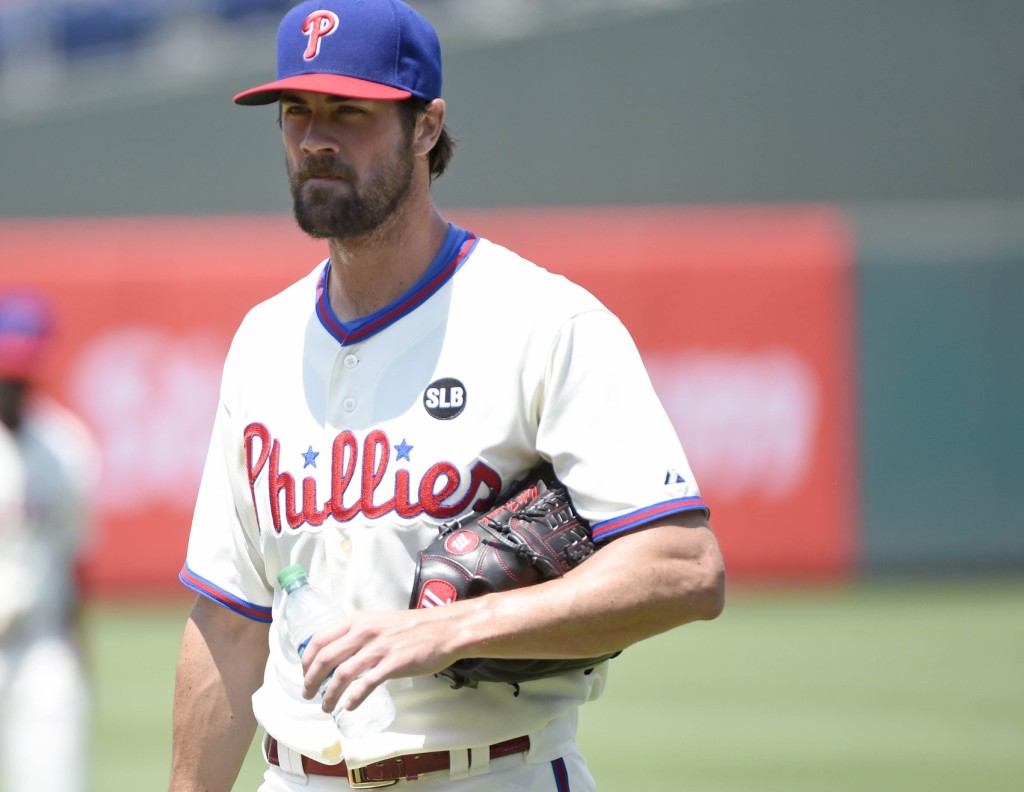Ad Disclosure
Ken Rosenthal Says the Phillies Should Lower their Expectations. Join the Club.
By Jim Adair
Published:

The MLB trade deadline is 10 days away. Cole Hamels is on the block, but in order to get a deal done, maybe the Phillies – like the rest of us already have – should lower their expectations. At least, so says Ken Rosenthal (pictured).
“This is not my opinion. This is the opinion of people in the game,” Rosenthal writes. “This is about how teams value prospects and high-priced players, about how trades work today.”
Teams interested in Hamels, the magic bowtie says, would look at his value by trying to assess what he could command as a free agent if he signed a three-year deal at the end of the season and then back into his “surplus value”:
For the sake of discussion, let’s say $32 million per season. Using that figure, Hamels’ current deal includes a surplus value — his projected free-agent value minus his current value. That value equates to about $9.5 million per season, or a total of $28.5 million.
In truth, Hamel’s current surplus value is even greater; teams will pay a premium at the deadline due to the difficulty of acquiring players in-season (Fangraphs’ Dave Cameron wrote last year about this multiplier effect.) Again, we’re estimating, but let’s assign Hamels a total surplus value of $50 million –and that number, based on discussions with people in the game, probably is high …
By these measures, what should the Phillies realistically expect for Hamels? A good prospect for sure … then perhaps a few major-league-ready types with upside …
In other words, something like Price Redux.
The Phillies do not want to hear this; Hamels is their biggest trade chip, the one they are counting on to help accelerate their rebuilding process. Their fans will not want to hear it, either; for more than a year now, they’ve anticipated a monster package for Hamels, with club officials promising that they will move him only for fair value.
Alas, the definition of “fair value” has changed. Prospects are in, high-priced pitchers in their early 30s are out – particularly when such pitchers will be readily available this offseason in free agency, where the cost in talent is no more than a draft pick.
And the scariest outcome here? The Phillies could keep Hamels. Amaro has stopped just shy of committing to getting rid of him, and has said on more than one occasion that Hamels could still be a valuable part of the next competitive Phillies team. But the longer they hold on, the less value their biggest trade chip has, and the further away that next competitive Phillies team seems.
When he's not writing about sports here or ranting about them on Twitter, Jim is probably watching X-Files on Netflix or drinking a beer somewhere. Jim has nothing against hockey, it's just not his style. He once met Duce Staley at a Sixers game.